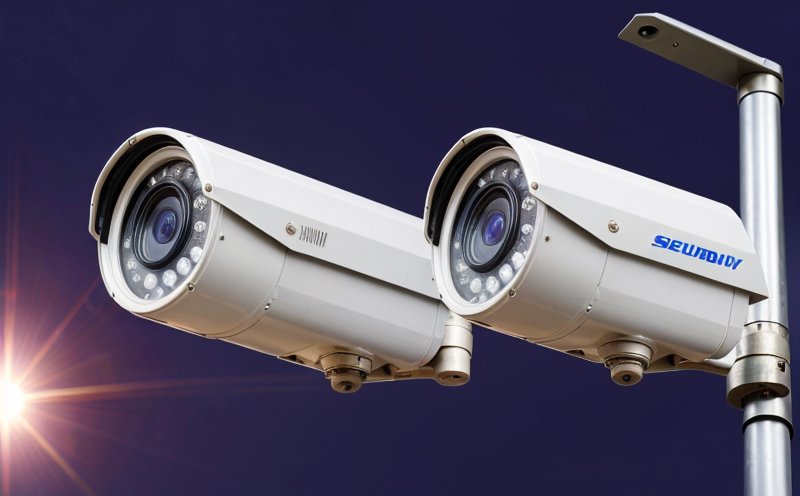Security and Surveillance Equipment Standards: Ensuring Safety and Compliance
In todays world, security and surveillance equipment are essential components of any organizations safety and risk management strategy. From banks to airports, schools to hospitals, and government institutions to commercial businesses, the need for reliable and secure surveillance systems has never been more pressing. However, with the proliferation of digital technologies and the constant evolution of threats, ensuring that these systems meet the necessary standards is crucial.
The importance of security and surveillance equipment standards cannot be overstated. Not only do they provide a level of assurance to organizations and individuals regarding the effectiveness of their safety measures, but they also help prevent incidents by detecting vulnerabilities and areas for improvement. Moreover, compliance with established standards ensures that these systems meet the requirements set forth by relevant regulatory bodies, thereby avoiding potential liabilities.
Key Considerations in Security and Surveillance Equipment Standards
When evaluating security and surveillance equipment standards, several factors must be considered:
Video Quality: High-definition (HD) video resolution is essential for effective surveillance. Look for systems that offer 1080p or higher resolutions to ensure clear, high-quality images.
Field of View: A wide-angle lens allows for better coverage and can reduce the number of cameras required. However, its also essential to balance this with the need for focused views in specific areas.
Low-Light Performance: Cameras must be able to capture clear images even in low-light conditions. Look for systems with IR (infrared) capabilities or those that use light-enhancing technologies.
IP Camera Standards and Network Security
When it comes to IP cameras, there are several key standards to consider:
Protocols: Ensure the camera uses standardized protocols like ONVIF (Open Network Video Interface Forum) or RTSP (Real-Time Streaming Protocol). These allow for seamless integration with existing security systems.
Encryption and Authentication: Look for cameras that support secure encryption methods like SSL/TLS and AES. Additionally, ensure the system requires authentication before allowing access to sensitive areas.
Additional Considerations
In addition to IP camera standards and network security, consider the following factors:
Power Supply: Ensure the camera has a reliable power supply, such as PoE (Power over Ethernet) or battery backup.
Weather Resistance: For outdoor installations, select cameras with weather-resistant enclosures that can withstand extreme temperatures, humidity, and other environmental conditions.
Standards for Different Types of Surveillance Systems
Different types of surveillance systems have varying standards:
1.
CCTV (Closed-Circuit Television): Look for systems that meet the requirements set forth by ONVIF or PSIA (Physical Security Interoperability Alliance).
2.
IP Cameras: Ensure the camera meets the IP66 rating, which indicates it can withstand exposure to dust and water.
3.
Analog Systems: When selecting analog cameras, ensure they meet the standards set forth by the Electronic Industries Association (EIA).
Standards for Specific Applications
Different applications require specific standards:
Airports: Look for systems that meet the requirements of IATA (International Air Transport Association) and TSA (Transportation Security Administration).
Banks: Ensure the system meets the requirements set forth by the PCI-DSS (Payment Card Industry Data Security Standard) and NIST (National Institute of Standards and Technology).
Government Institutions: Look for systems that meet the requirements set forth by NIST and FISMA (Federal Information Security Management Act).
QA: Additional Details on Security and Surveillance Equipment Standards
1. What is the difference between HD and Full HD video resolution?
HD refers to a minimum of 720p, while Full HD is at least 1080p.
2. Why is low-light performance essential in surveillance cameras?
Low-light performance allows for effective monitoring in areas with limited lighting, reducing blind spots and enhancing overall security.
3. What are the key differences between ONVIF and RTSP protocols?
ONVIF is a more comprehensive protocol that offers better integration and compatibility, while RTSP provides real-time streaming capabilities.
4. How do I ensure my IP cameras meet the required standards for network security?
Look for systems with secure encryption methods like SSL/TLS and AES, as well as authentication requirements before allowing access to sensitive areas.
5. What are the key considerations when selecting a weather-resistant camera enclosure?
Ensure the enclosure can withstand extreme temperatures, humidity, and other environmental conditions.
In conclusion, security and surveillance equipment standards play a vital role in ensuring safety and compliance for various organizations. By understanding the essential standards and requirements, you can make informed decisions when selecting and installing these systems.

































